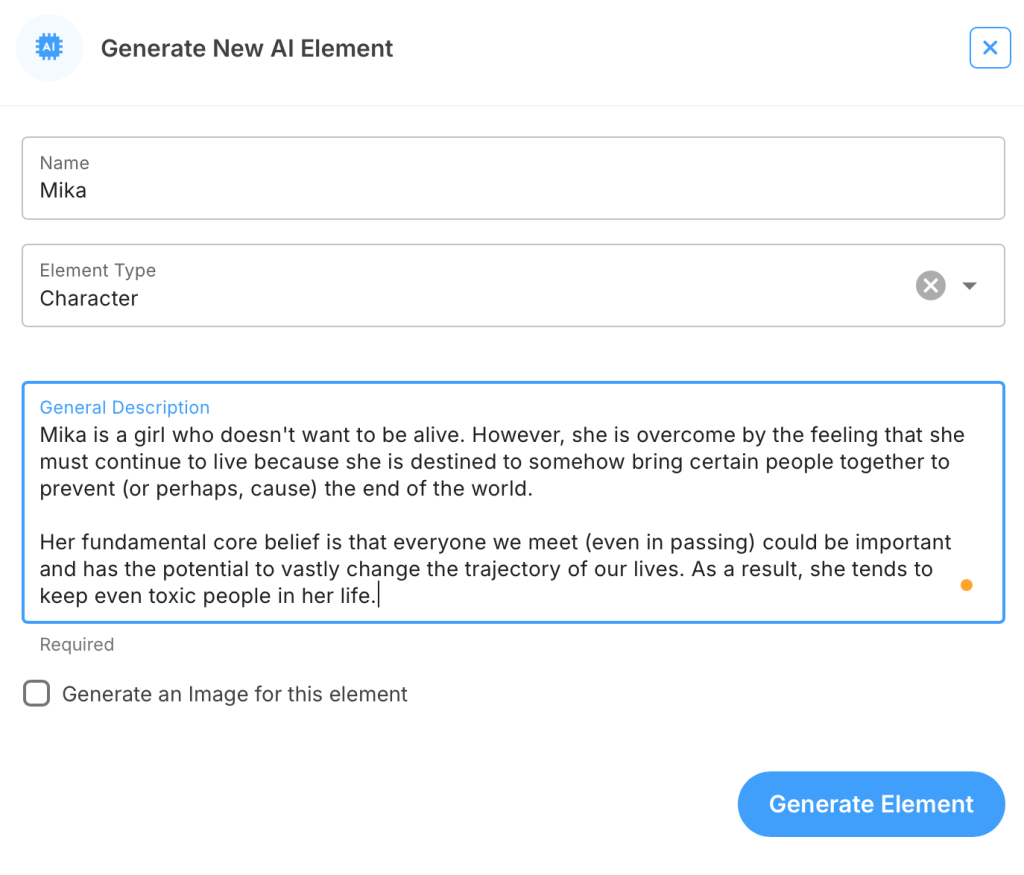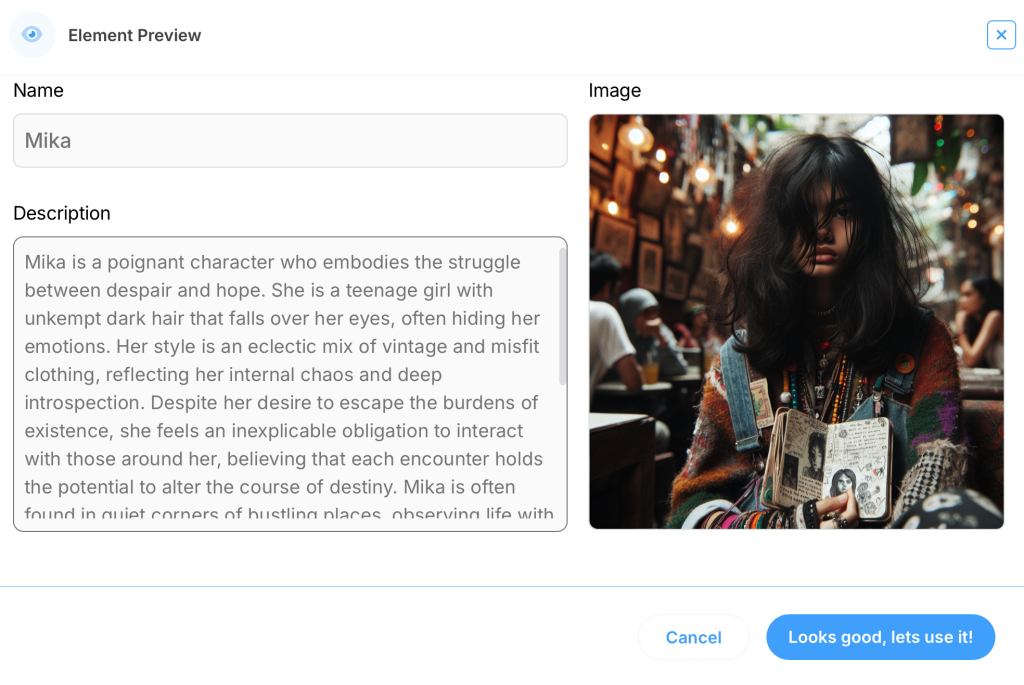How To Create Fictional Characters: Best 3-Step Method

When it comes to character building in fiction, it’s not uncommon to start with details – what they look like, clothing, backstory, etc, and then do personality, then move to bigger things like how the characters’ world view and beliefs. However, this common method is somewhat backwards. Today, I’ll be giving you a brand new take on how to create fictional characters.
Instead of starting with the small things and working outward, we’re going to establish our character’s core beliefs first and then go from there for the details. Core beliefs can be things like, “people always leave, you have to be perfect to be loved, don’t trust people, etc.”
Once you understand what your characters believe and how they see the world, it will influence their relationships, backstory, speech, fears, and many other things. So, let’s get into the three-step reverse method for building characters in fiction.
Table Of Contents
1. Find Your Character’s Core Belief
The first step is to find a key core belief for your character. Think of the core belief as part of the character’s internal compass. Even if unconscious, this fundamental personal truth about how the world should work or how they should behave will say a lot.
It’s often formed by past experiences, upbringing, or significant events. It’s the line they’ve drawn in the sand. Ask yourself, “What is my character’s unspoken rule?” Something that they won’t break. Some examples could include, “Showing vulnerability is a sign of weakness.” Or, “Success is the only true measure of worth.”
You May Also Like: How To Write Female Characters (As A Male Author) – 9 Key Tips
Whatever you pick, you’ll be able to ask yourself, “If they won’t break this rule, then what do they believe about the world and how does it affect them?” Once you do this, make it more interesting by applying a contradictory force (or internal longing) that gives them every reason possible to break it.
2. Flesh Your Character Out
Once you’ve identified your character’s core belief and considered the forces that might challenge it, you can strategically use it to develop crucial aspects of their current personality and even their past. With the foundational statement you started with, use it to fill in aspects of your character, like backstory and motivation.
Backstory
Whatever “rule to live by” you picked, it will likely stem from a past event. So, there is a natural tie-in with with backstory. This often leads to more genuine backstory too, because it’s justified and serves a meaningful purpose.
Delve into their past to uncover the formative events that led them to adopt this fundamental truth. Was it a single traumatic incident? A series of consistent experiences? The influence of a key figure in their life. Understanding the genesis of their core belief provides depth and explains why it’s so deeply ingrained.
You May Also Like: How To Do Backstory (Without Flashbacks) – 5 Best Tips
For instance, a character with the core belief “The world is inherently dangerous” might have experienced betrayal or abandonment in their childhood. Mapping these past events will make their present convictions feel earned and authentic.
Actions
A character’s core belief will naturally influence their choices and behaviors. Consider what actions align with their unspoken rule. A character who believes “Family loyalty is the most important thing” might consistently prioritize their family’s needs, even at personal cost.
However, remember the power of contradiction. Actions that go against their core belief, especially when driven by the aforementioned contradictory forces or internal longings, can create compelling internal conflict and drive significant character development. When a character breaks their own rule, it reveals immense pressure or a profound shift in their understanding.
Personality
Beyond outward actions, the core belief shapes a character’s internal landscape. How does it affect their thought processes? Are they cynical, optimistic, trusting, or guarded? How do they cope with stress or uncertainty? What small things may trigger them?
Their core belief will also color their interactions with others. A character who believes “Showing vulnerability is weakness” might be emotionally distant or project an image of unwavering strength. By understanding this internal framework, you can create consistent and nuanced reactions in various situations, making your character feel like a fully realized individual.
3. Add The Details
It’s tempting to start with superficial details like eye color or a quirky habit, but with the reverse method, these elements gain far more significance when considered last. By first establishing the core belief, the formative backstory, the resulting actions, and the underlying personality, the details you add will be organically connected and more impactful.
A Mannerism
Instead of a random tic, a mannerism can now reflect the character’s internal state. A character who believes “I must always be in control” might have a habit of constantly adjusting their clothing or maintaining rigid posture, betraying their underlying anxiety even as they strive for composure. A nervous habit of tapping their fingers could stem from the internal conflict of wanting something that contradicts their core belief.
Speech Pattern
The way your character speaks can be deeply rooted in their core beliefs and personality. A character who believes “Truth and honesty are always the best policy” might speak directly and plainly, even to the point of bluntness.
Conversely, a character who fears vulnerability might use humor or sarcasm as a defense mechanism, deflecting genuine connection. Their word choice, cadence, and even the topics they gravitate towards can all be informed by their foundational beliefs.
Everything your character says doesn’t have to be a result of how they see the world. However, motivations, how dialogue with other particular characters, and subtext, can all be influenced by what is beneath the surface for a given character in the story.
Specific Looks
While you can certainly choose initial physical traits, considering them last allows you to imbue them with deeper meaning and have a purpose within the plot. A character with a traumatic past that shaped their belief in a dangerous world might have perpetually guarded eyes or carry physical scars.
Someone whose core belief is tied to external validation might be meticulously concerned with their appearance. Even seemingly arbitrary details like hair color or clothing style can subtly reflect their inner world when considered through the lens of their established core.
How To Create Fictional Characters With LivingWriter
Creating standout characters is crucial for making your story memorable. Yet, the challenge of avoiding cliches and ensuring your characters resonate with readers is real. Enter LivingWriter – your solution to the character creation struggle.
Advanced Character Creation
LivingWriter has been voted the best writing helps you take your good ideas and create the best possible characters with them by offering you several features capable of creating and refining characters. These include:
- Character AI Tools
- Manuscript Chat Features To Refine Characters
- Character Image Capabilities
- Integration Of Characters Into The Manuscript
AI Elements
Most general AI aren’t particularly helpful for character building because they’re very general and offer “cookie cutter” suggestions. However, LivingWriter AI is designed to help writers do their best work, not write it for them.
You May Also Like: How To Create AI Elements on LivingWriter
So, you can create your best characters without taking all the soul out of the story and making it feel mechanical. With the click of a few buttons, you can give the software some basic info on what you’re looking for (including whatever “core belief” you picked) and get a character profile back in a matter of moments.

As you can see, you can describe things with plain language in as little detail as you’d like. Once your info is in, click generate, and you’re set. Here’s the character I got from the description above:

The AI simply expands upon the info provided. This example includes several small facts driven by the unique worldview for the character. It’s giving some substance to the character while leaving the exact details up to the author. Further down in the description, it added:
“She carries around a small notebook, filled with sketches and notes about the people she meets—a way of documenting their significance to her own life and to the world at large. Her fundamental belief in the interconnectedness of humanity drives her to maintain relationships, even those that are toxic or painful.”
These descriptions help to set the foundations for things like backstory, relationships, distinctive traits, and even some internal and external conflict. It also begins to set the stage for you to develop clear motivations for the character and an arc for them to evolve and grow past their flaws.
Again, without actually writing your story for you. Instead, you get the building blocks for a well-build character that you can be sure fits your vision and style as you add details.
Character Images
When you create an AI character, you can also opt to have it make an image for it, be checking the box, here:

A high-quality unique image add a ton of personality to a character. Like they say, a picture is worth 1000 words. So, I highly recommend you try including an image and see if it sparks creative ideas for the character that you wouldn’t have thought about otherwise.
Conclusion
By prioritizing the internal framework before layering on the external details, you ensure that every aspect of your character, from their deepest convictions to their smallest quirks, feels intentional and contributes to a richer, more believable, and ultimately more compelling portrayal.
Now, the only thing left to do is get out there and write. Until next time, take care, and have fun building those characters.